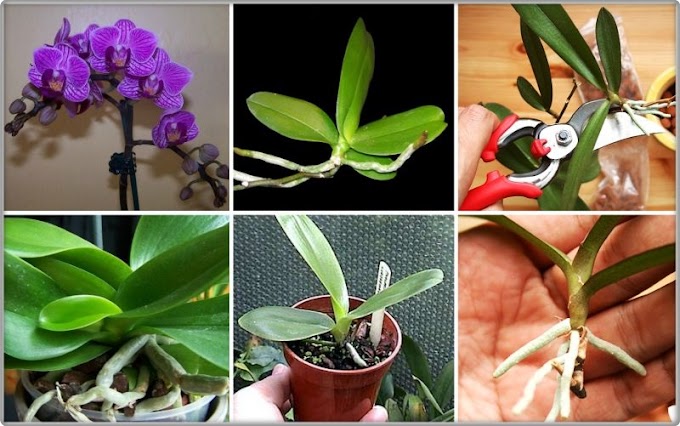The genus Tavaresia includes at least 2 species (T. barkleyi, T. angolensis) of spiny stem succulents from Angola, S. Africa, Namibia and Zimbawe. A third species Tavaresia thompsoniorum may be a natural hybrid. The genus has also been known as Decabelone.
Short, erect, 6-14 angled stems carry rows of tubercles furnished with 3 fine white spines which gives the plants a cactoid appearance. Technically, these spines represent a modified leaf spine with 2 side stipules, unique to this genus. Stems take on a dramatic dark colouration in a sunny position, contrasting with the spines. The large funnel-shaped flowers make these plants attractive to collectors. Swellings near the tips of the coronal lobes are also unique to this genus.
Light: Tavaresias prefer light shade rather than full sun, although stems may not color up under shady conditions.
Water: They should at all times sparingly watered (best rain water with some occasional fertilizer), and in winter time they hardly require any.
Temperature: A minimum winter temperature of 41°F (5°C) is acceptable, providing that plants are kept absolutely dry.
Soil: They grow well in light gritty soil with a very liberal drainage.
General Care
Tavaresias are mainly grown by plant collectors, lovers of succulents and enthusiasts who enjoy growing unorthodox looking plants. They comes from summer rainfall areas, and are intolerant of excess water, humidity and low winter temperatures and easily destroyed by moulds. Flower buds drop off easily in response to the slightest touch or unfavourable conditions.
Propagation and planting
Tavaresia can be propagated easily by seed or stem cuttings. Fresh seed germinates rapidly after sowing. Seeds are best sown in spring in a well-drained, light sandy soil mixed with compost and covered with a thin layer of soil, in a shaded and fairly moist place. The pH should be 6.5–7.5. Temperatures of 25–35°C are optimal. Once the seedlings are about 5 cm tall, they can be pricked out and planted. Care should be taken not to damage the roots. Generally, the plants grow fast and will flower in 2–3 years.
Cuttings should be taken during the active growing stage to ensure good rooting, before plants become dormant. Cuttings can flower in their first year, depending on their size. Cuttings strike well if they are given at least 2 weeks to dry out in a shady place before planting. Fungicide treatment before planting is recommended. Cuttings are planted out in a well-ventilated area with about 40% shade. During very hot weather daily watering is needed. Plants can also be propagated by grafting.
Pest and problems
Keep their roots free of mealy bugs, as fungal attack often occurs as a result of damage to stems by insects. A layer of grit on the surface of the compost prevents moisture from accumulating around the base of the stems and minimise the chance of fungal attack on the roots.
Short, erect, 6-14 angled stems carry rows of tubercles furnished with 3 fine white spines which gives the plants a cactoid appearance. Technically, these spines represent a modified leaf spine with 2 side stipules, unique to this genus. Stems take on a dramatic dark colouration in a sunny position, contrasting with the spines. The large funnel-shaped flowers make these plants attractive to collectors. Swellings near the tips of the coronal lobes are also unique to this genus.
Light: Tavaresias prefer light shade rather than full sun, although stems may not color up under shady conditions.
Water: They should at all times sparingly watered (best rain water with some occasional fertilizer), and in winter time they hardly require any.
Temperature: A minimum winter temperature of 41°F (5°C) is acceptable, providing that plants are kept absolutely dry.
Soil: They grow well in light gritty soil with a very liberal drainage.
 |
| source: flickr.com |
General Care
Tavaresias are mainly grown by plant collectors, lovers of succulents and enthusiasts who enjoy growing unorthodox looking plants. They comes from summer rainfall areas, and are intolerant of excess water, humidity and low winter temperatures and easily destroyed by moulds. Flower buds drop off easily in response to the slightest touch or unfavourable conditions.
Propagation and planting
Tavaresia can be propagated easily by seed or stem cuttings. Fresh seed germinates rapidly after sowing. Seeds are best sown in spring in a well-drained, light sandy soil mixed with compost and covered with a thin layer of soil, in a shaded and fairly moist place. The pH should be 6.5–7.5. Temperatures of 25–35°C are optimal. Once the seedlings are about 5 cm tall, they can be pricked out and planted. Care should be taken not to damage the roots. Generally, the plants grow fast and will flower in 2–3 years.
Cuttings should be taken during the active growing stage to ensure good rooting, before plants become dormant. Cuttings can flower in their first year, depending on their size. Cuttings strike well if they are given at least 2 weeks to dry out in a shady place before planting. Fungicide treatment before planting is recommended. Cuttings are planted out in a well-ventilated area with about 40% shade. During very hot weather daily watering is needed. Plants can also be propagated by grafting.
Pest and problems
Keep their roots free of mealy bugs, as fungal attack often occurs as a result of damage to stems by insects. A layer of grit on the surface of the compost prevents moisture from accumulating around the base of the stems and minimise the chance of fungal attack on the roots.
Links
Back to genus: TAVARESIA
Back to genus: TAVARESIA
SUCCULENT PLANTS: Browse succulents by Scientific Name, Common Name, Genus, Family, USDA Hardiness Zone, Origin, or cacti by Genus



